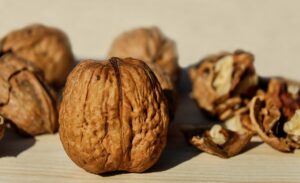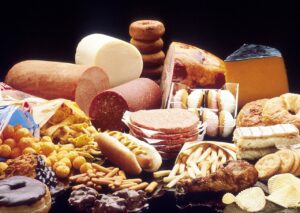Introduction to Muscle Improvement:
Muscle growth is a goal for many, whether you’re an athlete looking to enhance performance, someone working toward better physical health, or simply aiming to look and feel your best. Building muscle and improving strength is a process that involves a combination of proper exercise, nutrition, and recovery. This guide will explore effective methods for muscle improvement, covering everything from the basic science behind muscle growth to the most advanced techniques used by top athletes. Here in this blog, we will see why understanding muscle science is key to building strength.
Why Understanding Muscle Science is Key to Building Strength?
 Before diving into the practical aspects of muscle improvement, it’s important to understand how muscles grow and improve. Muscle improvement, known as hypertrophy, is the increase in the size of muscle fibers as a result of regular exercise, specifically resistance training. When you subject your muscles to stress (such as lifting weights or performing bodyweight exercises), the fibers experience microscopic tears. As they heal, they grow back stronger and larger. This process is known as muscle adaptation. All the solution is available in ‘ Why Understanding Muscle Science is Key to Building Strength?’
Before diving into the practical aspects of muscle improvement, it’s important to understand how muscles grow and improve. Muscle improvement, known as hypertrophy, is the increase in the size of muscle fibers as a result of regular exercise, specifically resistance training. When you subject your muscles to stress (such as lifting weights or performing bodyweight exercises), the fibers experience microscopic tears. As they heal, they grow back stronger and larger. This process is known as muscle adaptation. All the solution is available in ‘ Why Understanding Muscle Science is Key to Building Strength?’
Muscle growth involves three primary factors:
Mechanical Tension:
This refers to the force exerted on the muscle during exercise. The more tension placed on the muscle fibers, the greater the potential for growth.
Muscle Damage:
When you perform resistance exercises, you cause small tears in muscle fibers. The body repairs and rebuilds these fibers, resulting in muscle growth.
Metabolic Stress:
High-intensity exercises lead to a build-up of metabolic byproducts, such as lactic acid, that stimulate muscle growth through various hormonal responses.
Understanding these factors can help you design an effective training program to improve muscle size and strength.
Step 1: Develop a Comprehensive Workout Plan
 To improve your muscle mass and strength, you need a consistent and varied workout plan. Here are the most important factors to consider when creating your training regimen.
To improve your muscle mass and strength, you need a consistent and varied workout plan. Here are the most important factors to consider when creating your training regimen.
Resistance Training:
Resistance training is the cornerstone of muscle improvement. It involves performing exercises that work against an external resistance, such as free weights, machines, or bodyweight exercises. For maximum muscle growth, you should focus on compound movements, which involve multiple joints and muscle groups. These exercises provide the greatest stimulus for growth.
Effective Compound Movements:
 Squats:
Squats:
Great for building strength in the legs and core.
Deadlifts:
A full-body movement that emphasizes the back, legs, and core.
Bench Press:
Targets the chest, shoulders, and triceps.
Pull-Ups:
A bodyweight exercise that works the back and arms.
Rows:
Essential for building a strong back and improving posture.
Isolation exercises are also important for focusing on specific muscles. These exercises allow you to target a particular muscle and can help correct imbalances or weaknesses.
Examples of Isolation Exercises:
 Bicep Curls: Focuses on the biceps.
Bicep Curls: Focuses on the biceps.
Leg Extensions: Isolates the quadriceps.
Tricep Pushdowns: Targets the triceps.
Frequency and Volume
Growth of muscles is driven by progressive overload, which occurs when the body is forced to adapt to increasing levels of stress. You can achieve progressive overload by adjusting the intensity (weight), volume (sets and reps), and frequency (how often you train a muscle).
For beginners, training each muscle group 2-3 times a week is optimal. This can be done through full-body workouts or split routines, such as upper/lower body splits or push/pull/legs splits.
Example of a Full-Body Workout:
 Squats (3 sets of 8-12 reps)
Squats (3 sets of 8-12 reps)
Bench Press (3 sets of 8-12 reps)
Rows (3 sets of 8-12 reps)
Shoulder Press (3 sets of 8-12 reps)
Deadlifts (2 sets of 5-8 reps)
Bicep Curls (2 sets of 10-15 reps)
Tricep Pushdowns (2 sets of 10-15 reps)
As you progress, you can increase the volume or frequency by adding additional sets, reps, or workouts per week. The key to success is consistency and progressive overload.
Step 2: Nutrition for Muscle Improvement
According to blog ‘Why Understanding Muscle Science is Key to Building Strength?’ Nutrition plays a pivotal role in muscle growth. Without proper fuel, your body won’t be able to recover and repair muscle fibers effectively. There are three primary macronutrients that influence muscle growth: protein, carbohydrates, and fats.
Protein:
The building block of muscle protein is essential for muscle repair and growth. The time When you exercise, your muscles undergo stress and breakdown, and protein helps rebuild and repair the muscle fibers. The general recommendation is to consume between 1.2 and 2.2 grams of protein per kilogram of body weight daily, depending on your training intensity.
Best Protein Sources:
 Lean meats (chicken, turkey, beef)
Lean meats (chicken, turkey, beef)
Fish (salmon, tuna, cod)
Eggs
Dairy (milk, yogurt, cottage cheese)
Plant-based (lentils, chickpeas, tofu, quinoa)
Carbohydrates: Fuel for Your Workouts
Carbohydrates are your body’s primary source of energy. When you train, especially with high-intensity resistance workouts, your body relies on stored glycogen (carbohydrates) for fuel. Consuming an adequate amount of carbohydrates ensures that you have the energy to perform at your best during training sessions.
Best Carbohydrate Sources:
 Whole grains (brown rice, oats, quinoa)
Whole grains (brown rice, oats, quinoa)
Fruits (bananas, berries, apples)
Vegetables (sweet potatoes, broccoli, spinach)
Legumes (beans, lentils)
Carbohydrates are also important for recovery. After a workout, your glycogen stores are depleted, so consuming carbohydrates along with protein after your workout can help speed up recovery and optimize muscle growth.
Fats: Supporting Hormonal Health
While protein and carbohydrates are the primary focus for muscle building, fats play an essential role in supporting overall health, including the production of hormones like testosterone, which is crucial for muscle growth. Including healthy fats in your diet can ensure that you maintain optimal hormone levels.
Healthy Fat Sources:
 Avocados
Avocados
Nuts and seeds
Olive oil
Fatty fish (salmon, mackerel)
Hydration: The Unsung Hero
 Muscle performance and recovery are significantly impacted by hydration. Dehydration can lead to reduced strength, endurance, and an increased risk of injury. Drink water regularly throughout the day, and consider consuming electrolytes if you’re engaging in long or intense workouts.
Muscle performance and recovery are significantly impacted by hydration. Dehydration can lead to reduced strength, endurance, and an increased risk of injury. Drink water regularly throughout the day, and consider consuming electrolytes if you’re engaging in long or intense workouts.
Step 3: Prioritize Recovery
The muscle power isn’t just about lifting weights and eating right—recovery is just as important. Overworking muscles without allowing time for repair will hinder growth and increase the risk of injury.
Sleep:
 Sleep is essential for recovery. During sleep, the body releases growth hormones that help repair muscles and promote muscle growth. Aim for 7-9 hours of sleep per night for optimal muscle recovery.
Sleep is essential for recovery. During sleep, the body releases growth hormones that help repair muscles and promote muscle growth. Aim for 7-9 hours of sleep per night for optimal muscle recovery.
Rest Days:
Incorporate rest days into your workout routine. Muscles grow during periods of rest, not during the workout itself. Rest allows for muscle repair, which is vital for growth. You can use rest days to focus on other activities, such as stretching, mobility work, or low-intensity exercise like walking or swimming.
Active Recovery:
The active recovery involves engaging in low-intensity exercise after a tough workout. This can include light walking, cycling, or swimming. Active recovery promotes blood flow to the muscles, which aids in the removal of metabolic waste and provides nutrients to the muscles for faster recovery.
Step 4: Advanced Strategies for Muscle Improvement
For those who are beyond the beginner stage, it’s time to implement more advanced techniques for muscle growth. These strategies help push your muscles beyond their limits and enhance overall progress.
Progressive Overload:
Progressive overload is the process of gradually increasing the intensity of your workouts over time.
You can achieve this by
Increasing the weight you lift
Increase the number of sets and reps
Decreasing rest time between sets
Varying the exercises or movement patterns
This gradual increase in intensity ensures that your muscles continue to adapt and grow.
Periodization:
 Periodization is a structured approach to training that alternates between periods of high intensity and lower intensity to prevent overtraining and ensure optimal progress. A common approach is to divide the training cycle into three phases: hypertrophy (muscle growth), strength, and power.
Periodization is a structured approach to training that alternates between periods of high intensity and lower intensity to prevent overtraining and ensure optimal progress. A common approach is to divide the training cycle into three phases: hypertrophy (muscle growth), strength, and power.
Example of Periodization:
Hypertrophy Phase (4-6 weeks): Focus on higher reps (8-12) and moderate weights to build muscle size.
Strength Phase (4-6 weeks): Lower reps (3-5) with heavy weights to increase maximal strength.
Power Phase (3-4 weeks): Focus on explosive movements to develop power.
Drop Sets and Supersets:
 Drop sets and supersets are advanced techniques that increase training volume and intensity, pushing muscles to fatigue and stimulating growth.
Drop sets and supersets are advanced techniques that increase training volume and intensity, pushing muscles to fatigue and stimulating growth.
Drop Sets:
After reaching failure with a weight, immediately reduce the weight and continue the set until failure again. This can be repeated for multiple “drops.”
Supersets:
Perform two exercises back-to-back without rest. This may be done for exercises targeting the same muscle group (e.g., bicep curls and hammer curls) or opposing muscle groups (e.g., chest press and rows).
Rest-Pause Sets:
In rest-pause training, you perform as many reps as possible with a weight until failure, then rest briefly (10-20 seconds), and continue the set for additional reps. This allows you to push past the normal failure point and recruit additional muscle fibers.
Conclusion:
 To improve muscle mass and strength requires a multifaceted approach that incorporates effective resistance training, proper nutrition, adequate recovery, and advanced strategies as you progress. Whether you are a beginner or an experienced lifter, following these guidelines will help you achieve your muscle-building goals and set you on the path to long-term success. Keep challenging yourself, stay consistent, and don’t forget that muscle improvement is a journey that takes time and dedication. If you want to improve your muscles by vitamins, then click here
To improve muscle mass and strength requires a multifaceted approach that incorporates effective resistance training, proper nutrition, adequate recovery, and advanced strategies as you progress. Whether you are a beginner or an experienced lifter, following these guidelines will help you achieve your muscle-building goals and set you on the path to long-term success. Keep challenging yourself, stay consistent, and don’t forget that muscle improvement is a journey that takes time and dedication. If you want to improve your muscles by vitamins, then click here

